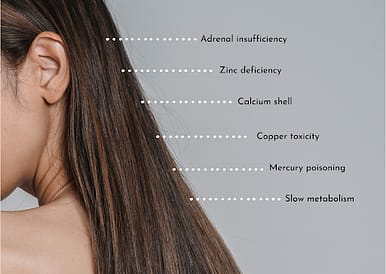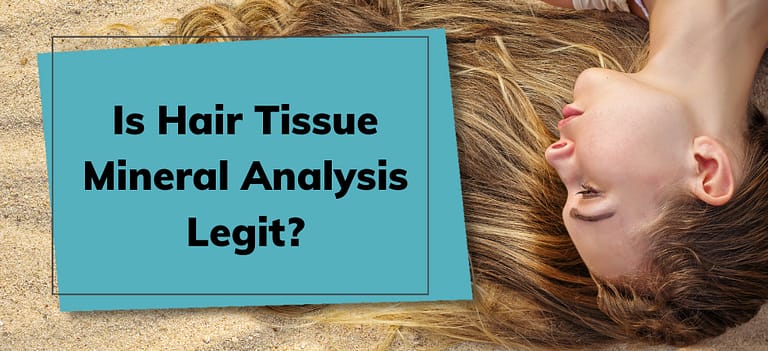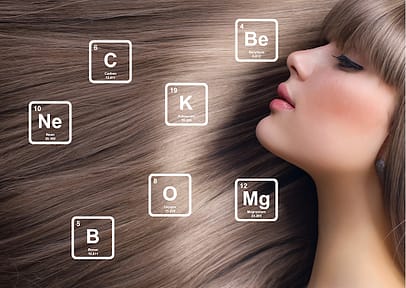Is Hair Tissue Mineral Analysis Legit?
 What if everything you need to help your clients live life to the fullest lies in the information found on their hair? And as if this isn’t yet good news material, what if that process only costs around 100 dollars? Sounds like you’ve just unlocked the perfect recipe for your life and wellness coaching career!
What if everything you need to help your clients live life to the fullest lies in the information found on their hair? And as if this isn’t yet good news material, what if that process only costs around 100 dollars? Sounds like you’ve just unlocked the perfect recipe for your life and wellness coaching career!
Hair tissue mineral analysis (HTMA) has been gaining popularity for the past two decades for this very reason. It debuted as a promising discovery but was later on put under the spotlight of medical scrutiny.
Many wonder if there are hardcore facts to back this breakthrough or if this is just some random pseudoscientific novelty.
To settle this debate, let’s explore the facts behind this procedure. Whether you are a health & wellness practitioner, health professional, health coach, wellness coach, nurse practitioner, dietician, naturopathic doctor, or simply exploring your options for safe medical practices, this article is for you.
What is Hair Tissue Mineral Analysis?
HMTA is a low-priced, risk-free, and non-invasive lab test that helps us check the minerals within a cell. This, in turn, tells you a lot about your client’s physiological condition:
It tells you what kind of minerals there are in their blood and if they are actually getting into their cells. It tells you about the conditions your clients may have.
It tells you how the thyroid glands and your adrenal hormones function.
It tells you about blood sugar regulation. It tells you about their speed of metabolism. It tells you about your client’s cellular acid and their body’s ability to detox.
Essentially, your client’s hair is the gateway to helpful information that helps you cater a personalized game plan to unlock their full potential.
To many, the wonders HTMA offers seem too good to be true. So for us to arrive at a logical conclusion on whether or not to trust in this practice, let us first understand the logic between hair and minerals.
How can our hair reveal the minerals in our body?

Analyzing the state of these dead cells gives us clues as to what minerals they carried in your system before they died and turned into, well, hair.
This helps us determine if the minerals that are in the blood are actually being carried by the cells. It also tells whether or not these cells actually deliver these minerals into the designated organs in your body the way they’re supposed to.
Now that we’ve established the basis of analyzing hair tissue minerals to one’s physiological status, the big question remains: do HTMA results accurately reveal our body’s mineral content? Is this practice even legit?
Is HTMA Accurate and Legit?
Some negative feedbacks come as outright judgments against natural and alternative therapy. While it’s easy to shrug off obviously prejudiced remarks, there are seemingly valid issues raised against HTMA that need to be addressed.
So now, I’ll give a fact on each of these top 7 HTMA myths, as mentioned on Dr. Stephen Barret’s website, QuackWatch.org. [1] (pun may or may not be intended)
Myth 1: Hair analysis is unreliable for evaluating individuals’ nutritional status.
FACT: Hundreds of reputable research institutes support the reliability of Hair Tissue Mineral Analysis.
Myriads of studies worldwide have all pointed to this conclusion: Minerals don’t just get randomly deposited in the hair. They follow specific and recognizable patterns that give us all the information about a person’s unique biochemistry.
In 1979, the United States Environmental Protection Agency performed a study on HTMA entitled Toxic Trace Metals in Mammalian Hair and Nails. [2] It has been concluded that hair is a meaningful and representative means of measuring levels of minerals and metals in individuals.
In March 1973, H. Al-Shahristani and I. K. Al-Haddad, researchers at the Nuclear Research Institute in Baghdad, Iraq, compared hair mercury content between normal and poisoned workers with varying symptoms.
The result was featured in an article in the Journal of Radioanalytical Chemistry. Regardless of the symptoms present in poisoned workers, it shows a direct correlation between hair mercury content and the level of ingested mercury compounds.[3]
For a more extensive list of references, functional diagnostic nutritionist Wendy Myers compiled an extensive list of research reports, books, medical journals, and articles about HTMA. [4] Here are a couple of excerpts from her page:
- “Several research programs for studying and establishing hair trace mineral concentrations have been implemented since 1965 by the International Atomic Energy Agency (IAEA). The research programs have been coordinated under Nuclear-based Methods for the Analysis of Pollutants in Human Hair. Hair was chosen by the IAEA due to the concentration of minerals in the hair and its reflection of both external and internal contamination. The bulk of data on trace element concentrations has been reported from hair samples obtained from the scalp.”
- Ryabukhin, T.S.: International Coordinated Program on Activation Analysis of Trace Element Pollutants in Human Hair. Hair, Trace Elements, and Human Illness. Brown, A. C.; Crounse, R. G., ed. Praeger Publications, 1980.
- “The consensus of most workers in the field is that if hair samples are collected properly, cleaned and prepared for analysis correctly and analyzed by the best analytical methods, using standards and blanks as required, in a clean and reliable laboratory, by experienced personnel, the data are reliable.
- Toxic Trace Metals in Mammalian Hair and Nails. United States Environmental Protection Agency Publication 1979; EPA-600/4: 79: 049
Myth 2: Normal reference ranges have not been defined for hair mineral analysis.
FACT: All commercially operating laboratory in the United States is regulated under the Clinical Laboratory Improvement Amendments Act (CLIA).
Periodically, laboratories are given blind samples to test under defined reference ranges. If they don’t meet the criteria as stated in CLIA Act, they have to shut down. Under regular inspection, laboratories performing HTMA have to follow a specific standard of accuracy to continue their operations.
Myth 3: No connection between hair level and nutritional data indicators has been established.
FACT: HTMA interpretation is not a linear approach. Practitioners must consider the entire mineral combination before interpreting the results.
It is true that one specific mineral level in the hair doesn’t always have a direct correlation to its presence in the body. Just because something is high on hair mineral analysis doesn’t mean it’s high in the body. In fact, it could represent a loss pattern.
Often, minerals are high due to loss. Because the body can’t hold on to them due to a specific factor preventing their absorption, these minerals get dumped. Take zinc, for example. Elevated zinc in the hair with a sign of copper toxicity may mean that copper drove zinc away, resulting in low levels of zinc in the body.
This is where it comes down to the practitioner’s intelligence and ability to interpret HTMA correctly. So while it is possible to use HTMA as the basis for your life and wellness coaching game plan in a few months, HTMA interpretation has a learning curve that requires attention and effort. [5]
Myth 4: Hair mineral analysis can be affected by various hair products such as shampoo, bleach, hair dyes, and other various substances.
Fact: As with any test, there are specific pre-test preparations to ensure accurate results.
For example, a person going for a blood chemistry test must fast for at least 8-12 hours. Otherwise, high glucose levels in the blood may lead to a false diabetes diagnosis when it was simply because of the pasta he had for lunch.
The same goes for hair. Before taking in hair samples from your clients, you may want to inform them about avoiding specific hair products for a certain period of time.
Certain hair products, like shampoos containing zinc oxide or selenium sulfide, will affect the hair’s mineral levels. With hair dyes, clients must wait eight weeks to grow virgin hair before collecting the samples, so the dye does not affect the results.
These necessary measures of preparation do not indicate HTMA inaccuracy. This simply tells us that, like any other test, specific factors can interfere with the results.
As professional HTMA practitioners, we must inform our clients about the necessary preparations and take these factors into consideration when interpreting the results.
Myth 5: HTMA result does not reflect current nutritional status due to slow hair growth.
Fact: Slow hair growth is a good thing about HTMA. It allows us to see the bigger picture of the person’s physiological state.
What’s happening at the exact moment in your client’s body may not necessarily reflect the daily average on a long-term basis. With HTMA, we’re getting that average.
Since hair grows slowly, it allows us to see the person’s general state within a longer period of time. This gives us a bigger window into the health of the body.
Myth 6: Most commercial labs have not validated their techniques against standard reference materials.
Fact: Mineral testing by spectroscopy is a valid and standard process of testing minerals in the environment.
Mineral testing technology has been used for over 75 years and has been common in agriculture, geology, and animal tissues.
Myth 7: Using a single hair mineral analysis test is inaccurate for medical diagnosis. Also, lab errors do occur.
Fact: We use HTMA testing to get information about the body and help guide our clinical and natural protocols. Not for diagnosis.
I agree that lab findings should be considered together with the patient’s history and physical examination. We treat the person, not the result.
If we want to help people, we should perform a full health assessment. We don’t just look at the numbers on a test result and establish them as the sole determinant for a diagnosis.
Regarding lab errors, they occur in any lab, not just for HTMA. As practitioners, we must always keep the possibility of lab errors in mind. So if we see a result that looks out of the ordinary or doesn’t make sense, we should call the lab and check-in.
In line with this note, I recommend going to laboratories that retest their samples several times if they notice inconsistencies or anything that looks out of the ordinary.
For example, recently, I had a result that came back that didn’t seem right to me. I called Trace Elements Incorporated, the lab I also recommend you use, and they told me that they had already tested the sample four times after seeing that the results didn’t look normal.
Using laboratories that value accuracy provides more layers of assurance that we’re reading our results right, especially when the results are off the charts.
Myth 8: Hair tissue mineral analysis is unscientific, economically wasteful, and probably illegal.
Fact: Under proper sample preparation and reliable laboratories, HTMA is a scientific, economical, efficient, and legitimate test to understand your body’s chemistry.
This myth was Stephen Barret’s conclusion after performing a study on commercial hair analysis in 1985 entitled “Commercial Hair Analysis. Science of Scam?” [6]
In this study, S. Barret took hair samples from his children and set them to 13 different commercial laboratories performing multimineral hair analysis.
The results showed inconsistency and potentially frightening nutrient imbalances. There were also inconsistent types and amounts of food supplement recommendations among six laboratories.
Let’s take a closer look at this study. The experiment must follow a standard procedure for scientific research to lead to an accurate result. Does the study follow the standard procedure?
First, the hair samples in this study were cut into little pieces at the end of the hair. After washing with water, the samples were sent off to 13 different laboratories.
This is not the standard procedure. To get accurate HTMA reports, hair must be taken close to the scalp and must not be chemically washed, as it can lead to contamination that results in inconsistent results.
Four of the labs he sent hair samples to in this study showed excellent correlation. Notably, these labs are known for following standard procedures and do not chemically wash their hair samples. The other nine labs that have been reported to wash hair samples chemically showed moderate to no correlation at all.
To conclude that HTMA is a scam would discredit the quality performance of the four laboratories that followed standard protocols and showed incredibly accurate results.
It is unfair to dismiss HTMA’s credibility based on the inaccurate reports from nine unreliable laboratories. Rather, it is safe to say that the samples used in this study did not follow the standard procedure, which opens to inaccurate results.
When it comes to accuracy, the laboratory plays an important role in following the correct mineral testing process. Picky as it seems, I only recommend two laboratories: 1, Analytical Research Laboratory and 2, Trace Elements Incorporated. [7]
Conclusion:
HTMA has repeatedly been misinterpreted and put in a bad light. Despite all this, hundreds of studies from different research institutes worldwide attest that this procedure is reliable, accurate, and adequately regulated.
Of course, the HTMA results are only as accurate as the practitioner interpreting them. True, learning more about HTMA and how to interpret it requires effort, but it’s worth it. It will take your life and wellness coaching biz to a whole new level, creating fool-proof game plans so your clients can live life to the fullest!
Written by: Kendra Perry
Want to learn more about HTMA? Check out my free masterclass: How to Master Hair Tissue Mineral Analysis
References:
- Commercial Hair Analysis: A Cardinal Sign of Quackery – https://quackwatch.org/related/hair-2/
- Toxic Trace Metals in Mammalian Hair and Nails – https://cfpub.epa.gov/si/si_public_record_Report.cfm?Lab=ORD&dirEntryID=45357
- Journal of Radioanalytical Chemistry – https://link.springer.com/article/10.1007/BF02516558#citeas
- Hair Mineral Analysis Research Studies – https://myersdetox.com/hair-mineral-analysis-research-studies/
- How To Master Hair Tissue Mineral Analysis – https://training.kendraperry.net/s/IffJVB
- Commercial Hair Analysis. Science or Scam? By S Barret – https://pubmed.ncbi.nlm.nih.gov/4021042/
- Trace Elements Incorporated Official Website – https://www.traceelements.com/






